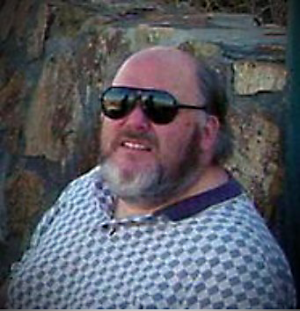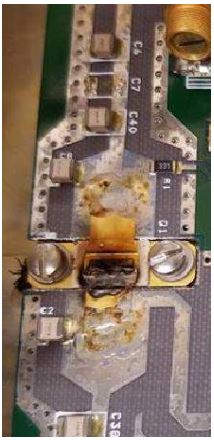The Need for Engineers – an Alternative View

[August 2017] Consolidation has continued over the past two decades, reducing the number of working broadcast engineers dramatically. Are broadcast engineers heading the way of the buggy whip? Dana offers this opinion.
“There’s a dead skunk sittin’ in the road
Dead skunk sittin’ in the road
Dead skunk sittin’ in the road
Stinkin’ to high heaven!”
– Loudin Wainright III
The popular view that most broadcasters have today is that there simply is not as much need for qualified Engineers today as in the past, because equipment has become more reliable.
Today, I will not only prove that belief flat wrong, but show that the need is greater today than ever before – and today’s stations are literally “shooting themselves in the foot” by believing otherwise.
Putting it possibly a bit overly-simplified: the days of looking for a dark tube and putting a new one in are long gone.
The Way We Were
Let us begin by getting into the “Wayback Machine,” setting it 30 years back – to 1987. The typical radio station then was still running transmitters using vacuum tubes though solid-state AM transmitters were quickly replacing them.
AM solid-state transmitters were available up to the 50 kilowatt level. FM transmitters were primarily still using tetrode and pentode tubes, though many units were 100% solid-state up to that final tube. Exciters were mostly analog using the BE FX-30, the Harris MX-15 and the Continental 802 – all excellent 100% solid-state units capable of true high fidelity.
Most STL links were either 950 analog micro-wave or equalized telephone program lines. Studio equipment was primarily 100% analog solid-state, utilizing CD players, cart machines, turntables, analog tape and analog audio processing.
Most stations either owned their own towers or rented space from another broadcaster.
Explain to me which of the above items you would consider unreliable? Frankly with the possible exception of the Telco program lines, I cannot find anything!
Now let us come back to today:
The Way We Are
Virtually all transmitters are 100% solid-state.
Exciters are digital, employing either multi-loop DSP processing or are actual microprocessors
(computer).
Such microprocessors have replaced relay logic in practically everything. RF plants are far more complicated than in the past due to IBOC and/or multi station antennas. STL links are now primarily either digital RF (including unlicensed 2.4 and 5.8 gHz), T-1 or MPLS links provided by the telephone company, or IP links – many times sent over the public Internet.
Most stations do not own their transmitter sites any more – instead they rent from ‘vertical real estate’ companies primarily used to dealing with cellular or two-way radio systems.
At the studio end, CD players and cart machines have given way to computer-based playout systems. Cart and CD racks have been replaced with many terabyte multi-station servers. Type-writers have been replaced with printers. Many stations have consoles with no audio passing through them – employ digital routers where every input and output in the entire station goes through them.
Even microphones are becoming digital and when they remain analog they still go to a box in the studio which outputs them as IP digital. Audio processing is 100% digital using either DSP ICs or actual Windows- or Linux-based computers.
Bottom line: the audio remains in digital format all the way to the listener’s receiver.
Qualified Help Required
Is this more or less complicated then the radio station of 1987?
I would argue that it is far more complicated! Not only that, but there is also a lot less of it that is under the direct control of the station. While transmitters might be solid-state, they also fail – and when they do it is generally more catastrophically then the tube rigs of yesterday.
The fact is that today’s stations have multiple points of failure.
Yes, each piece of the equipment might seem more reliable than its predecessor but when it does fail it (and everything does fail sooner or later) it generally takes more time and knowledge to repair then in the past.
Jack of Many Trades
If you stop and seriously think about it, today’s engineers have to be adept at more technologies then at any time in the past.
Not only are the days of looking for a dark tube and putting a new one in are long gone, the ability to use a test speaker or headphone to find where the audio is clipping in your air chain is history – and I am not sure that is a good thing.
I say this because I recently did some work on an FM station that just did not sound ‘right.
What I found was that early in their air chain there was digital clipping – that the ‘declipper’ in their new whiz bang digital audio processor was trying its best to remove.
Today’s engineers also have to be better politicians then in the past because in many cases they are trying to work with people who are not broadcasters – instead, they come from the two-way and/or cellular technologies and do not budget for replacement gear until it is totally dead..
Am I saying that today’s technologies are inferior than in the past? Not at all. They are simply far different then yesteryear – and the need to have a qualified engineer on staff is more necessary than ever, as is continuing education on the newer aspects of the industry’s gear.
Missing the Point
Unfortunately, many stations simply do not believe this reality.
As a result the numbers of qualified engineers are dropping as people retire (right now the average age of a broadcast engineer is late 50s – mid 60s). Young people go into other disciplines of engineering because they do not see a future in broadcasting – with its 24/7 workweek.
This self-fulfilling prophecy must be stopped, lest broadcasters find themselves without any engineer.
The future belongs to those with both the vision to see its possibilities and the wisdom to not repeat the mistakes of the past.
– – –
Dana Puopolo is the Chief Engineer at Rowan University’s WGLS in Glassboro, NJ. You can reach Dana at dpuopolo@usa.net

